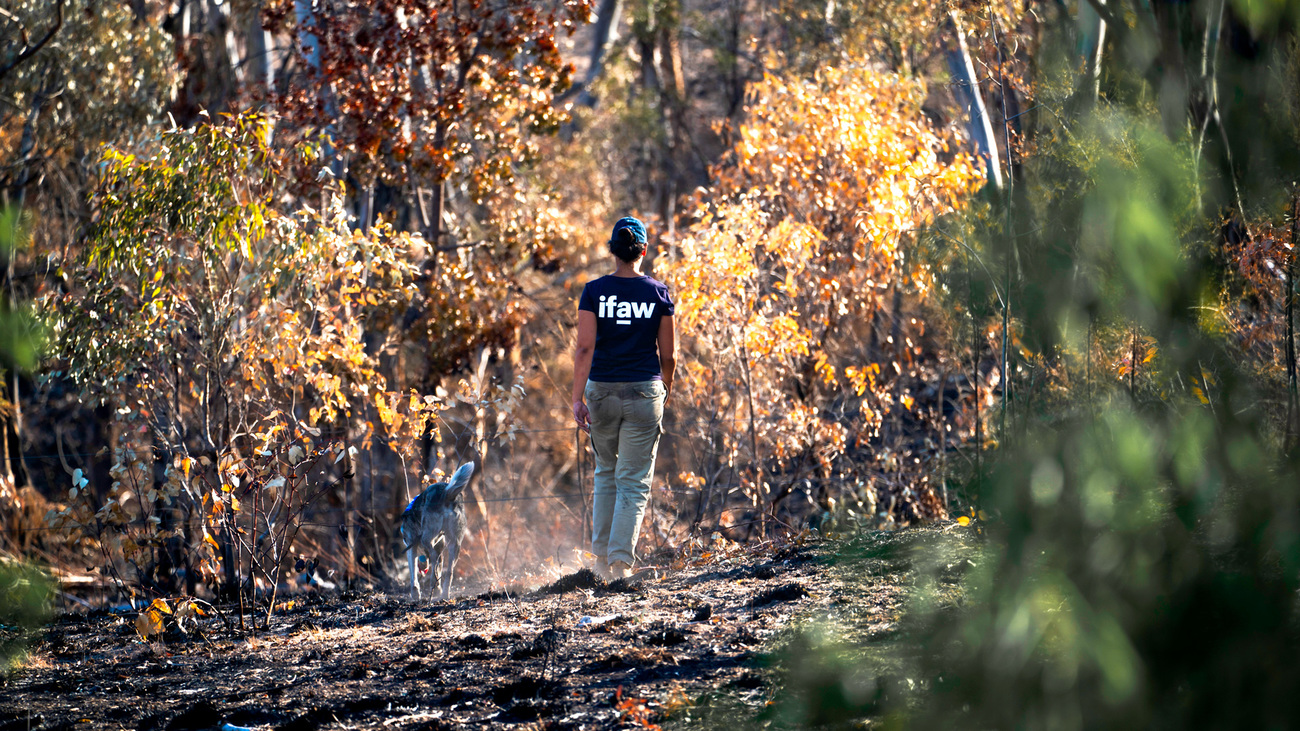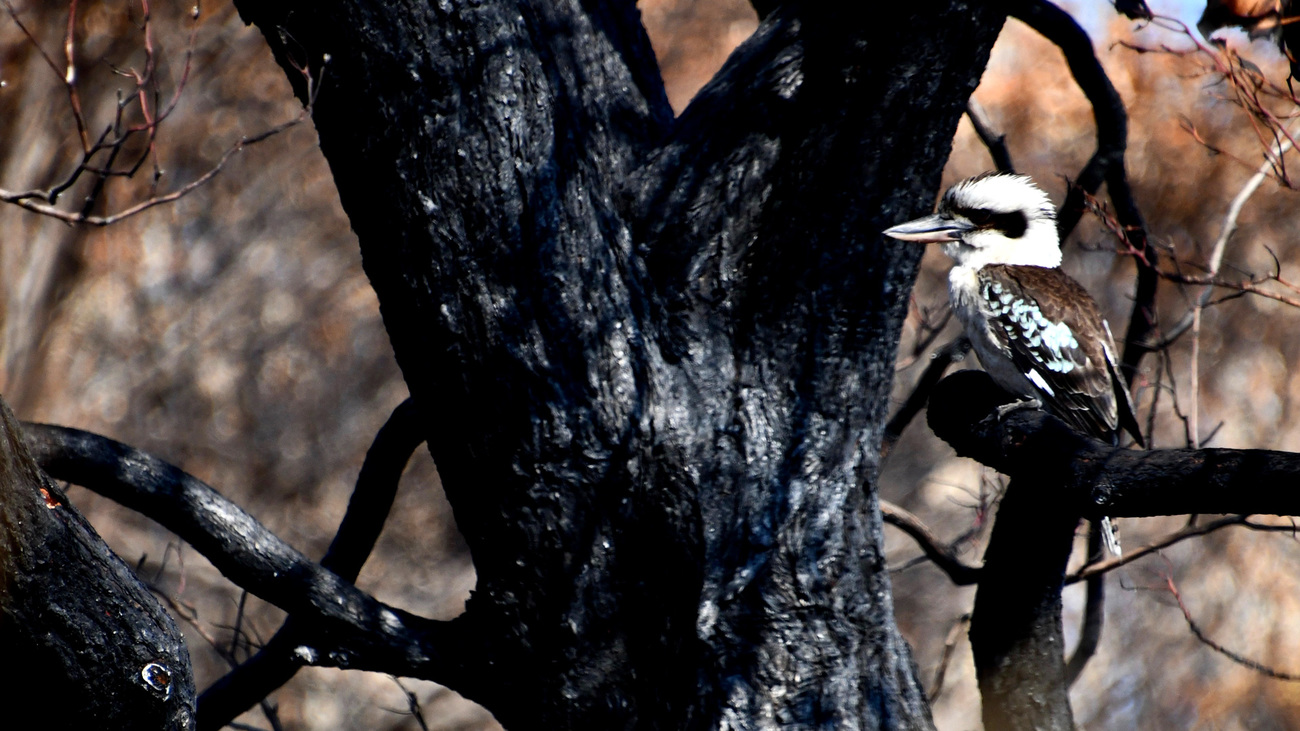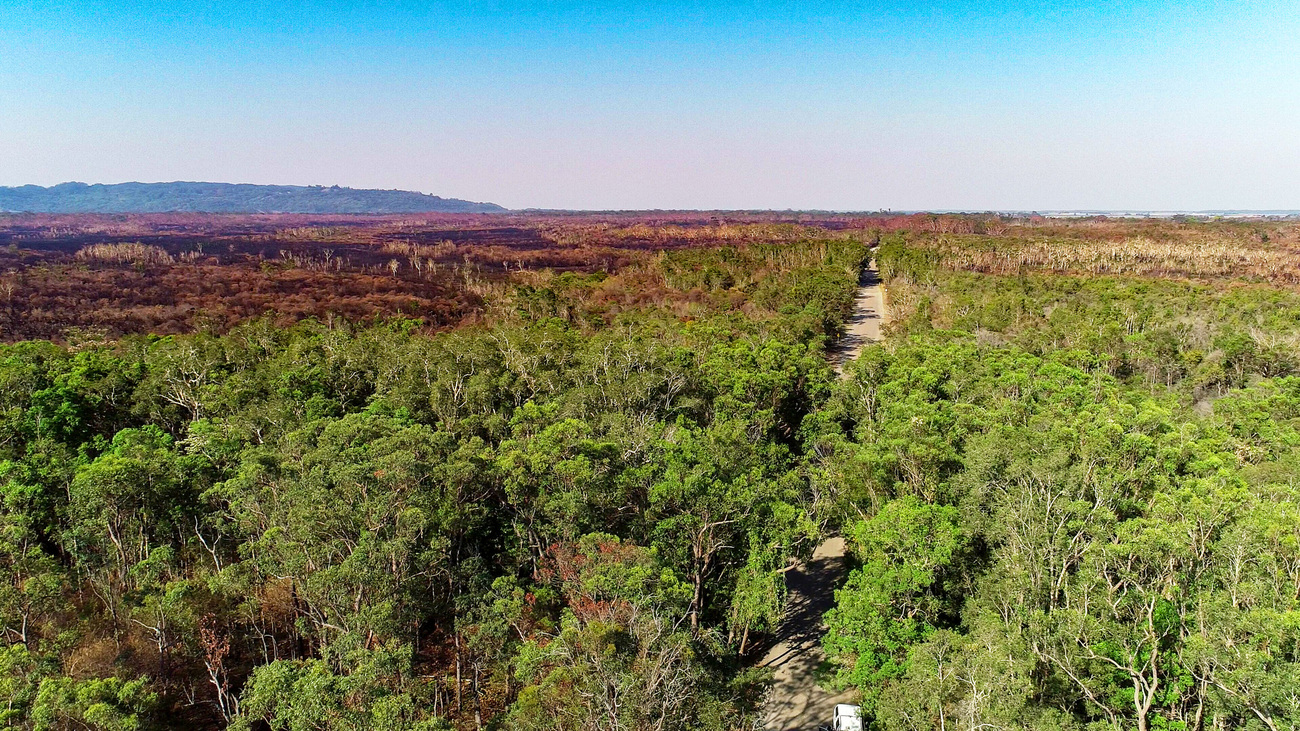Rebecca Keeble
The only true value of ivory should be on a living elephant in the wild.
Remembering Black Summer: Five years later, prioritising disaster preparedness
In late 2019 the sky went black in many parts of Australia. In the following months, unprecedented bushfires killed 33 people, destroyed thousands of homes, killed approximately three billion animals, and wreaked havoc on 24 million hectares of habitat.

With our decades of experience responding to disasters around the world, IFAW took immediate action, deploying a team of local and international skilled responders to provide on-the-ground support around the clock for more than a month in the form of supplies, medications, veterinary care, food, transport assistance, and direct support to wildlife carers inundated with injured wildlife.
Now, five years later, we continue to work alongside many organisations providing practical support, training, advice and assistance.
As efforts shifted from response to long-term recovery, we also took steps to address the bigger picture: we may not be able to prevent this happening again, but we can help the wildlife and emergency response sectors be better prepared to rescue and care for injured animals in the face of future disasters. Preparedness is a key priority for IFAW’s disaster response team in Australia and around the world.
The scale of the devastation wasn’t the only shock of Black Summer. The disaster also revealed how unprepared many sectors were, including the wildlife sector, to cope with such a catastrophic event. And the consequences were profound, including the decimation of wildlife populations, the destruction of ecosystems, and extreme stress suffered by all involved.
A crucial message emerged: an effective and resilient response system requires collaboration across various sectors, organisations, and levels of government. It cannot be achieved by one individual or group. When we all work together, we can build a well-coordinated emergency response plan for wildlife across multiple levels of government and regional networks.
In the aftermath of the fires, it was clear that the wildlife community across the board lacked the necessary tools, training, and coordination for disaster response—particularly on such a large scale. As response efforts understandably focus on protecting people and property, wildlife is often an afterthought or forgotten altogether. This lack of planning leads to an under-resourced volunteer sector becoming overwhelmed, and disaster agencies have no choice but to be reactive.

IFAW took the initiative to address these gaps in several ways:
As another bushfire season approaches, we strive to ensure the lessons learned from Black Summer are not forgotten.
We continue to support proactive preparedness through training, coordination and resource sharing between wildlife organisations and with government and response agencies. And we continue to advocate for better recognition and resourcing for the critical role the wildlife rescue community plays in disaster response.
By taking such actions ahead of future disasters, we hope to mitigate potential challenges and ensure the survival of both wildlife and human communities in the face of increasingly common threats.

Download the IFAW Wildlife Rescue App to ensure you can get immediate help for injured wildlife in Australia.
To learn more about our training for the wildlife and emergency response sectors, please email IFAW wildlife rescue officer Robert Leach at rleach@ifaw.org.
Rebecca Keeble
The only true value of ivory should be on a living elephant in the wild.
Our work can’t get done without you. Please give what you can to help animals thrive.
Unfortunately, the browser you use is outdated and does not allow you to display the site correctly. Please install any of the modern browsers, for example:
Google Chrome Firefox Safari